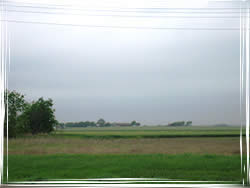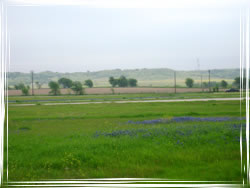Texas Eco-Regions
Grand Prairie and Plains back to Eco-Regions Map
Elevation
Elevation ranges from slightly under 350 feet in the east to over 1,500 feet above sea level in the west.
Precipitation
Average annual rainfall is approximately 20 to 30 inches.
Topography
The Grand Prairie and Plains consist of both wide lowlands, which resemble the landscape of the Blackland Region, and limestone mesa uplands. The topography is considered hilly, rolling and well-drained.
Soils
Beneath the Grand Prairie and Plains is limestone rock layers interbedded with clays with neutral to slightly acidic soils. The limestone outcrops and mesas of this eco-region consist of thin soils which support shallow-rooted trees such as Ashe juniper. The Grand Prairie has shallow, well-drained, dark clay soils.
Vegetation Description
The vegetation of this eco-region ranges from tallgrass in the prairie in the east, to shorter grasses in the prairies in the west. Before the days of fire suppression, certain agricultural practices and development, the uplands of this region were dominated by little bluestem, big bluestem, Indian grass, and tall dropseed. Forested areas were mostly limited to draws or drainage areas, stream banks and river valleys. Today, invasive woody vegetation, such as honey mesquite and Ashe juniper, is rapidly spreading throughout the upland areas of this region. The bottomlands have pecan, black walnut, cottonwood, black willow, American sycamore and bur oak tree species. A substantial amount of the Grand Prairie and Plains has been converted to cropland or improved pasture; however, this region still supports one of the largest areas of native grass in Texas.
Impacts of Fire
Before European settlement, large fires would frequently burn throughout this eco-region. These fires would suppress most woody vegetation and encouraged native grasses and forbs. As a result of continuous fire suppression, certain agricultural practices, and development, woody vegetation is commonly found throughout this once true grassland community.
Historical Information
Since the Grand Prairie and Plains eco-region was farmed less than the Blackland Prairies, more native grasses and forbs exist there today.
Other
The primary uses for land in this eco-region are farming, ranching and hunting.




